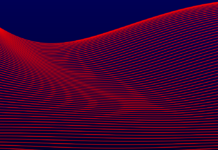Alacritty is a fast, cross-platform, and GPU-accelerated terminal emulator that has gained popularity among developers and system administrators for its focus on speed and minimalism. Developed in Rust programming language, Alacritty aims to provide a responsive and efficient terminal experience while maintaining simplicity and ease of use. This comprehensive exploration will delve into the key aspects of Alacritty, covering its features, architecture, customization options, and the broader impact it has had on the realm of terminal emulation.
1. Speed and Performance: A standout feature of Alacritty is its emphasis on speed and performance. The terminal emulator is designed to be blazingly fast, utilizing GPU acceleration to achieve responsiveness and low-latency rendering. This focus on speed ensures that Alacritty provides a smooth and efficient terminal experience, making it particularly appealing for users who value a responsive and snappy interface.
2. Cross-Platform Compatibility: Alacritty is a cross-platform terminal emulator, meaning it can be used on various operating systems, including Linux, macOS, and Windows. This versatility allows users to maintain a consistent terminal experience across different platforms, making Alacritty a preferred choice for developers and system administrators who work in diverse environments.
3. GPU Acceleration: Alacritty leverages GPU acceleration to enhance rendering performance. This approach offloads graphical processing to the computer’s graphics hardware, resulting in smoother rendering and improved overall responsiveness. GPU acceleration is a key factor in Alacritty’s ability to handle complex graphical interfaces and animations with ease.
4. Minimalist Design: One of the defining characteristics of Alacritty is its minimalist design. The terminal emulator adopts a clean and straightforward user interface, focusing on functionality without unnecessary visual clutter. This design philosophy aligns with the preferences of users who value simplicity and efficiency in their terminal workflows.
5. Configuration Options: While Alacritty follows a minimalist design, it provides a range of configuration options to cater to user preferences. Users can customize various aspects of the terminal, including colors, fonts, key bindings, and window behavior. This flexibility allows users to tailor Alacritty to their specific needs and integrate it seamlessly into their preferred development or system administration workflows.
6. Compatibility with Tmux and Shell Features: Alacritty is designed to work well with popular terminal multiplexers like Tmux. It seamlessly integrates with Tmux, allowing users to create and manage multiple terminal sessions within a single Alacritty window. Additionally, Alacritty supports a variety of shell features, ensuring compatibility with different shell configurations and enabling users to leverage their preferred shell functionalities.
7. Community-Driven Development: Alacritty is an open-source project, and its development is driven by a vibrant and active community of contributors. This community-driven approach fosters collaboration, encourages the sharing of ideas, and ensures that the project evolves based on user feedback and emerging requirements. The GitHub repository for Alacritty serves as a central hub for discussions, bug reports, and contributions from the user community.
8. Integration with Rust Language: Alacritty is implemented in the Rust programming language, known for its focus on memory safety and performance. The choice of Rust contributes to Alacritty’s speed and efficiency, and it also attracts developers who appreciate the language’s modern features and emphasis on code correctness. The use of Rust aligns with Alacritty’s goal of providing a reliable and performant terminal emulator.
9. Open Source and Extensibility: Being an open-source project, Alacritty encourages extensibility and customization. Users can not only customize the terminal’s appearance and behavior through configuration but also contribute to the project’s development by submitting pull requests or creating plugins. This open and extensible nature fosters a collaborative environment where users can actively participate in shaping the future of the terminal emulator.
10. Active Development and Updates: Alacritty benefits from active development and regular updates. The maintainers and contributors continue to enhance the software by adding new features, optimizing performance, and addressing issues reported by the community. This commitment to ongoing development ensures that Alacritty remains a modern and reliable choice for users seeking an efficient and feature-rich terminal emulator.
Alacritty has established itself as a prominent terminal emulator in the software development and system administration communities. Its focus on speed, minimalist design, cross-platform compatibility, and customization options makes it a compelling choice for users who prioritize a responsive and efficient terminal experience. As an open-source project driven by an engaged community, Alacritty continues to evolve, providing users with a modern and versatile tool for their terminal workflows.
The speed and performance capabilities of Alacritty set it apart as a terminal emulator designed for users who value efficiency and responsiveness in their daily workflows. Its cross-platform compatibility ensures that users can seamlessly transition between different operating systems while maintaining a consistent and fast terminal experience. Leveraging GPU acceleration is a pivotal aspect of Alacritty’s design, enabling the efficient rendering of complex graphical interfaces and animations. This approach contributes significantly to the overall snappiness of the terminal, making it well-suited for tasks that involve heavy graphical output.
Alacritty’s minimalist design philosophy is evident in its clean and straightforward user interface. This design choice prioritizes functionality over unnecessary visual elements, creating an environment where users can focus on their tasks without distraction. While the terminal embraces simplicity, it also offers a range of configuration options, providing users with the flexibility to tailor the interface to their preferences. Customization options include the ability to adjust colors, fonts, key bindings, and window behavior, ensuring that Alacritty remains adaptable to diverse user needs.
The terminal’s compatibility with Tmux, a popular terminal multiplexer, enhances its usability for users who manage multiple terminal sessions simultaneously. Alacritty seamlessly integrates with Tmux, allowing for efficient window management and facilitating a more organized workflow. Additionally, Alacritty’s support for various shell features ensures compatibility with different shell configurations, accommodating users who rely on specific shell functionalities and configurations in their work.
As an open-source project, Alacritty thrives on community-driven development. The engaged and active community surrounding the project contributes to its ongoing evolution. Users participate in discussions, report bugs, and submit contributions, fostering a collaborative environment that enriches the overall quality of the terminal emulator. The GitHub repository serves as a hub for community interaction, enabling users to stay informed about updates, provide feedback, and actively shape the direction of the project.
The decision to implement Alacritty in the Rust programming language underscores the project’s commitment to reliability and performance. Rust’s emphasis on memory safety and performance aligns with Alacritty’s goal of providing a robust and efficient terminal emulator. Developers who appreciate Rust’s modern features and focus on code correctness find Alacritty appealing, and the language choice contributes to the overall stability and speed of the terminal.
Alacritty’s extensibility and open-source nature enable users to contribute to the project and create plugins or customizations that enhance its functionality. This extensibility empowers users to tailor the terminal emulator to their unique needs and preferences. It also encourages a sense of ownership and engagement within the community, as users actively contribute to the growth and improvement of Alacritty.
The commitment to ongoing development and regular updates ensures that Alacritty remains a modern and reliable choice for users. The team behind Alacritty, along with the broader community, actively works on refining features, optimizing performance, and addressing any issues that arise. This dedication to continuous improvement reflects the responsiveness of the project to user feedback and evolving technological requirements.
In summary, Alacritty has carved a niche for itself as a leading terminal emulator, offering a combination of speed, simplicity, and customization. Its cross-platform compatibility, GPU acceleration, minimalist design, and active community involvement contribute to its popularity among developers and system administrators. As an open-source project, Alacritty remains a dynamic and evolving tool that reflects the collaborative spirit of the user community and the ongoing pursuit of excellence in terminal emulation.






















